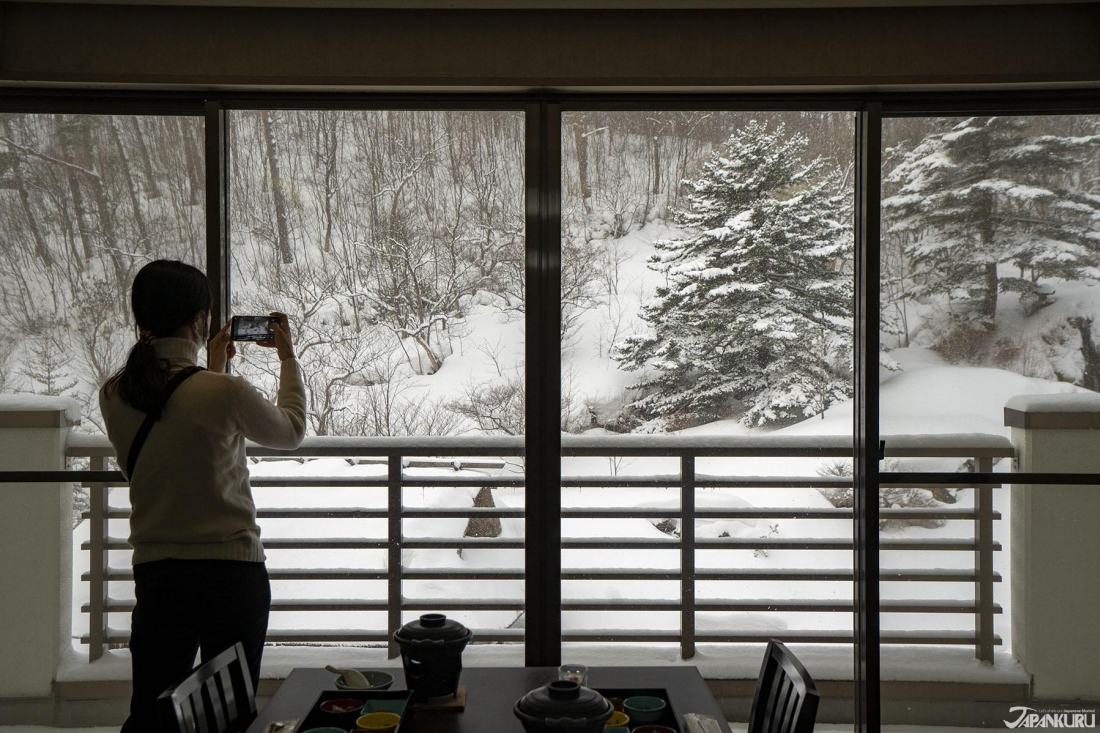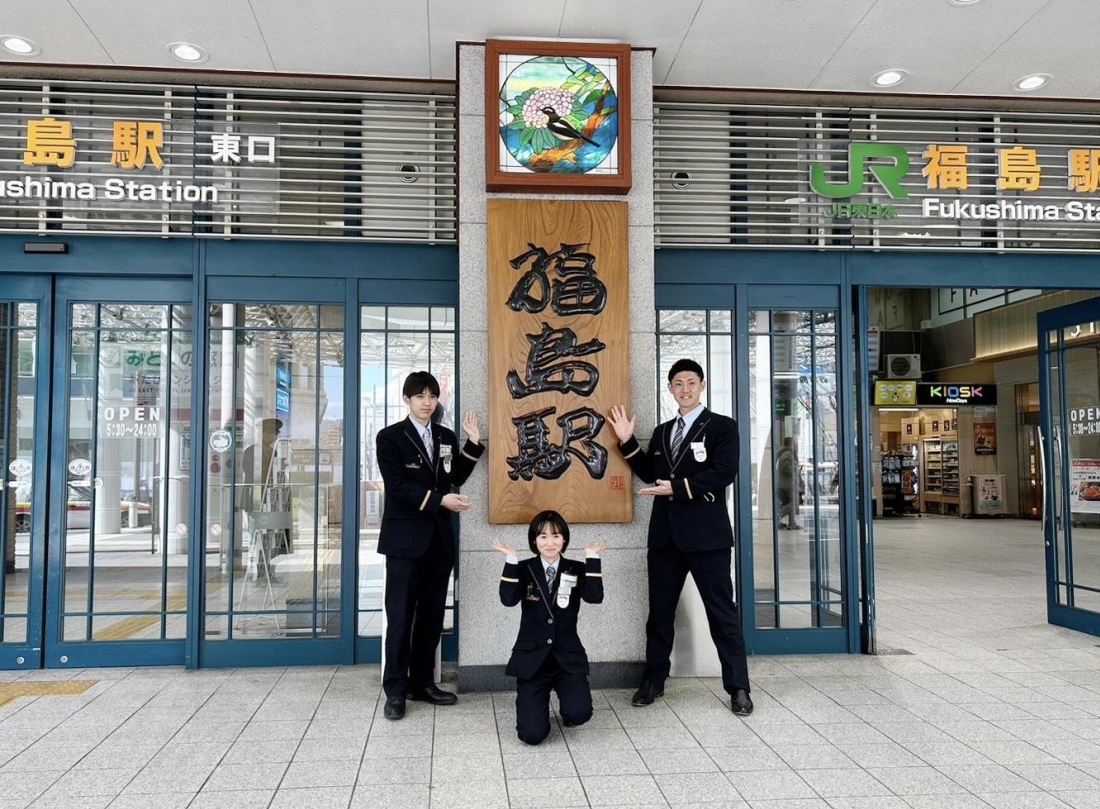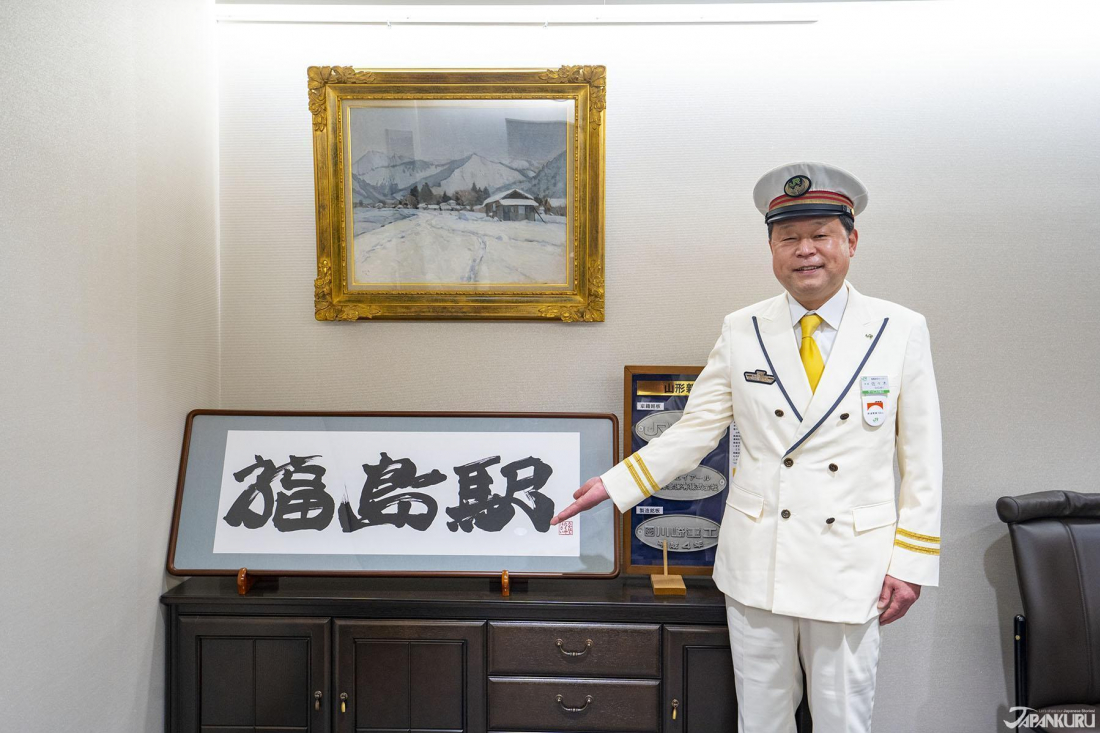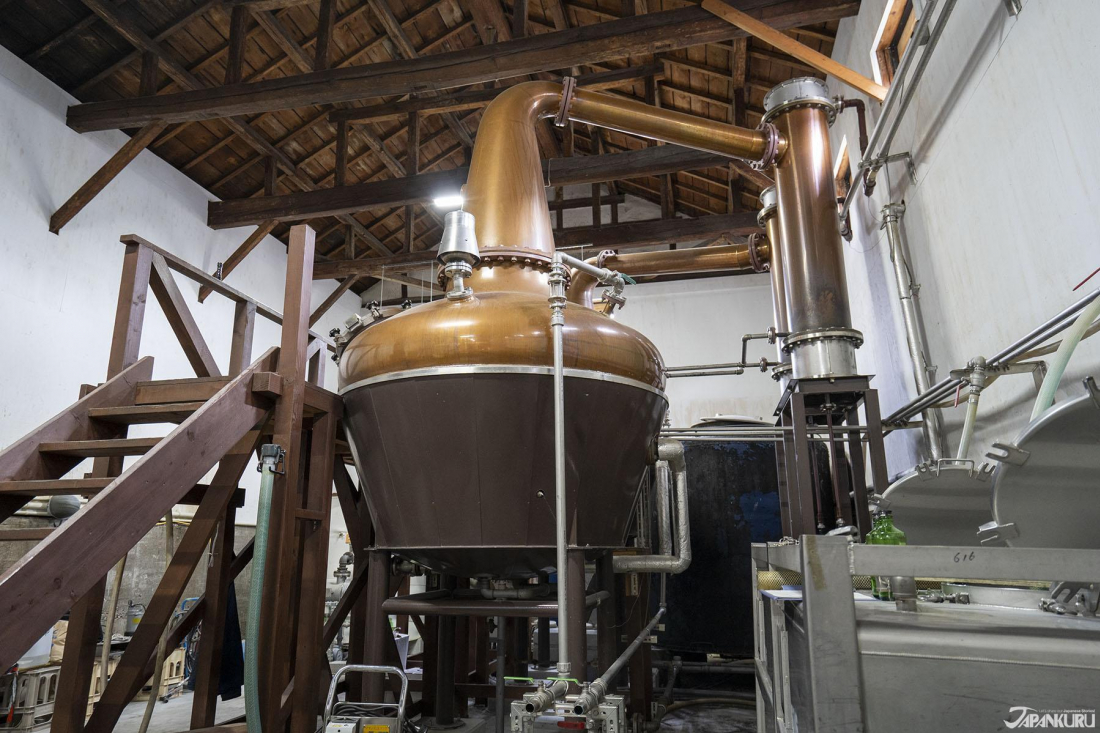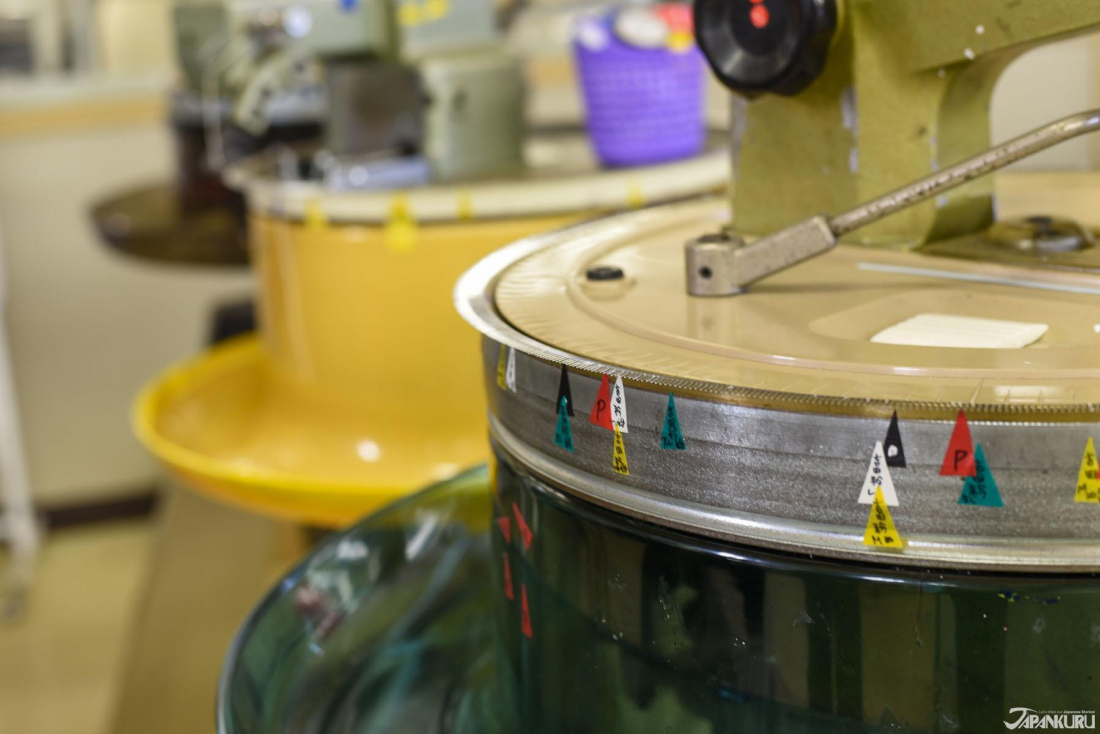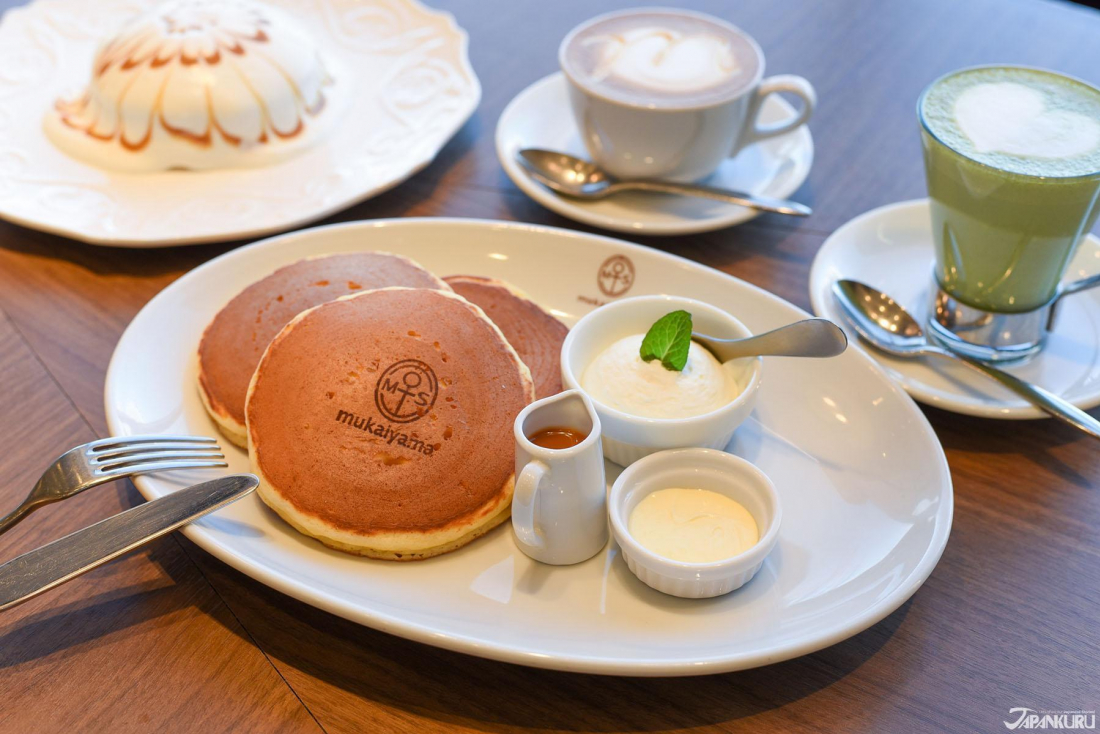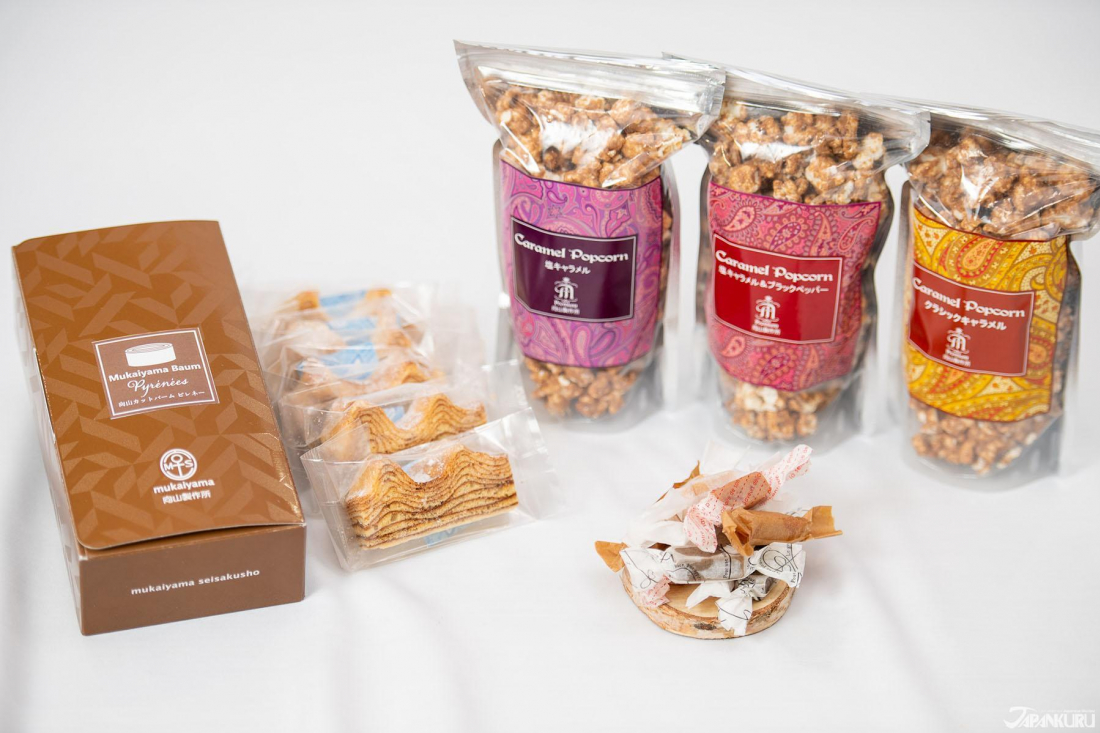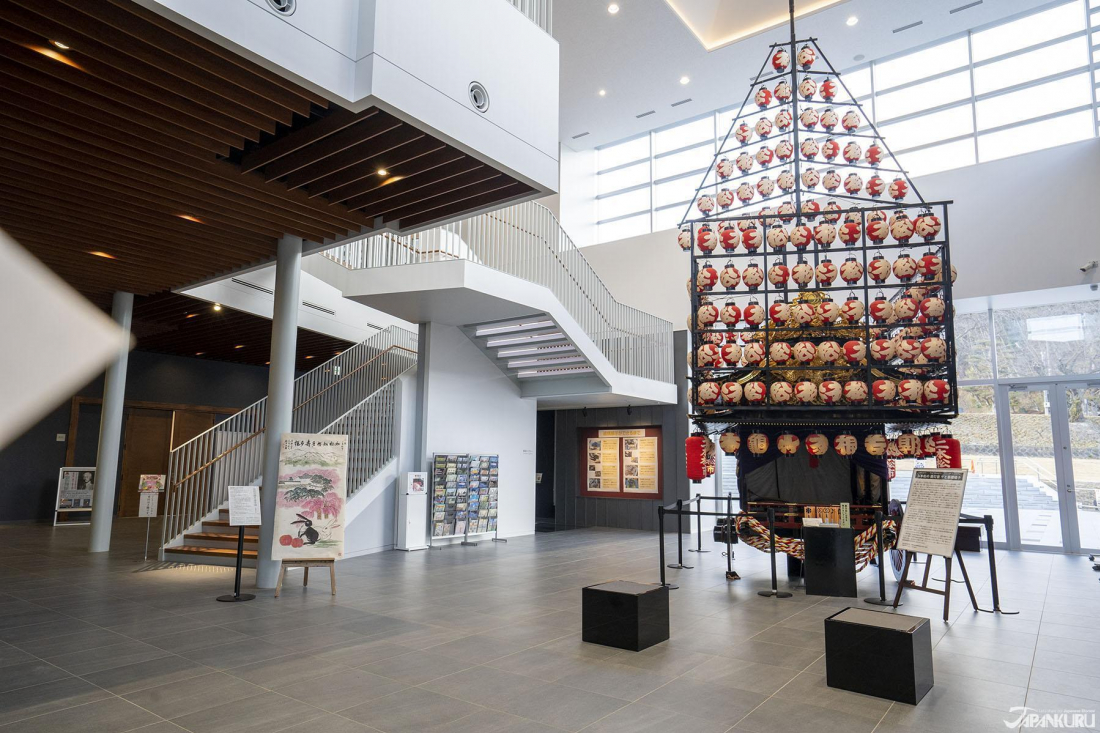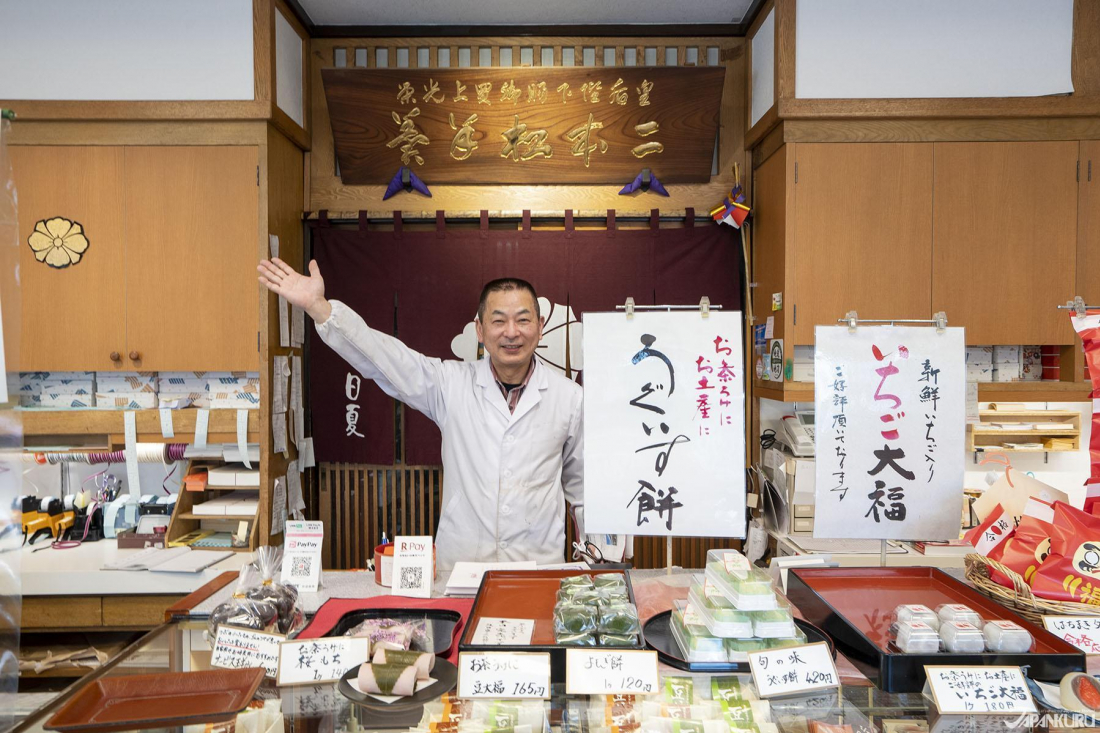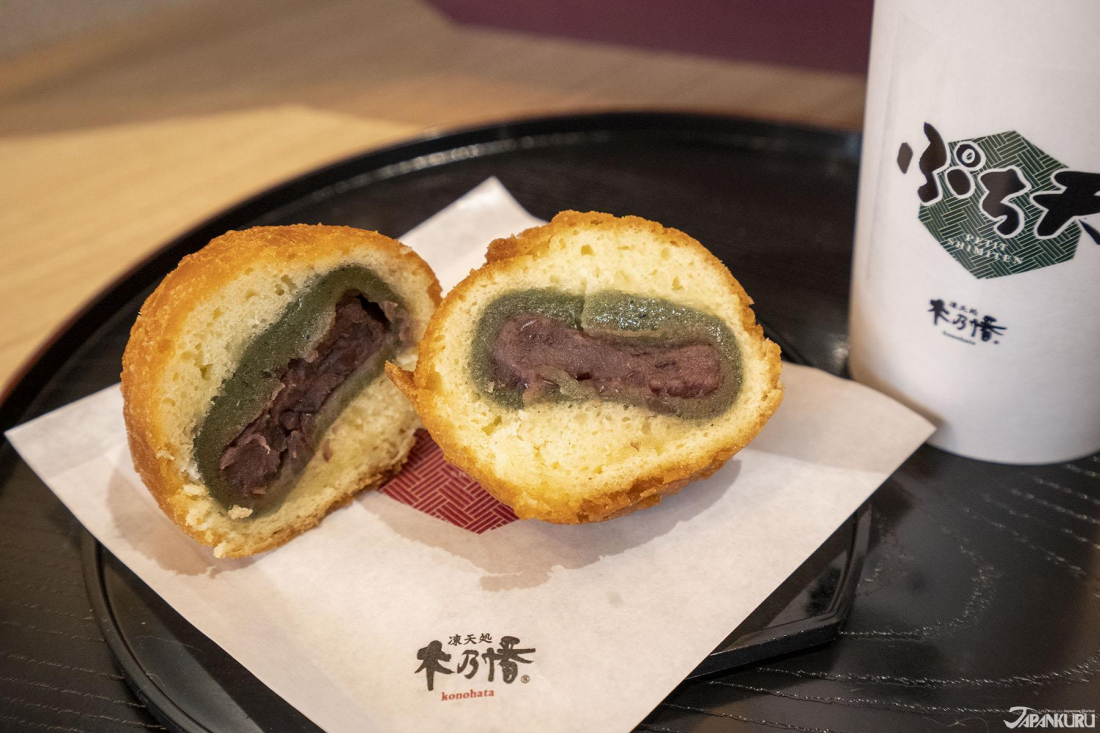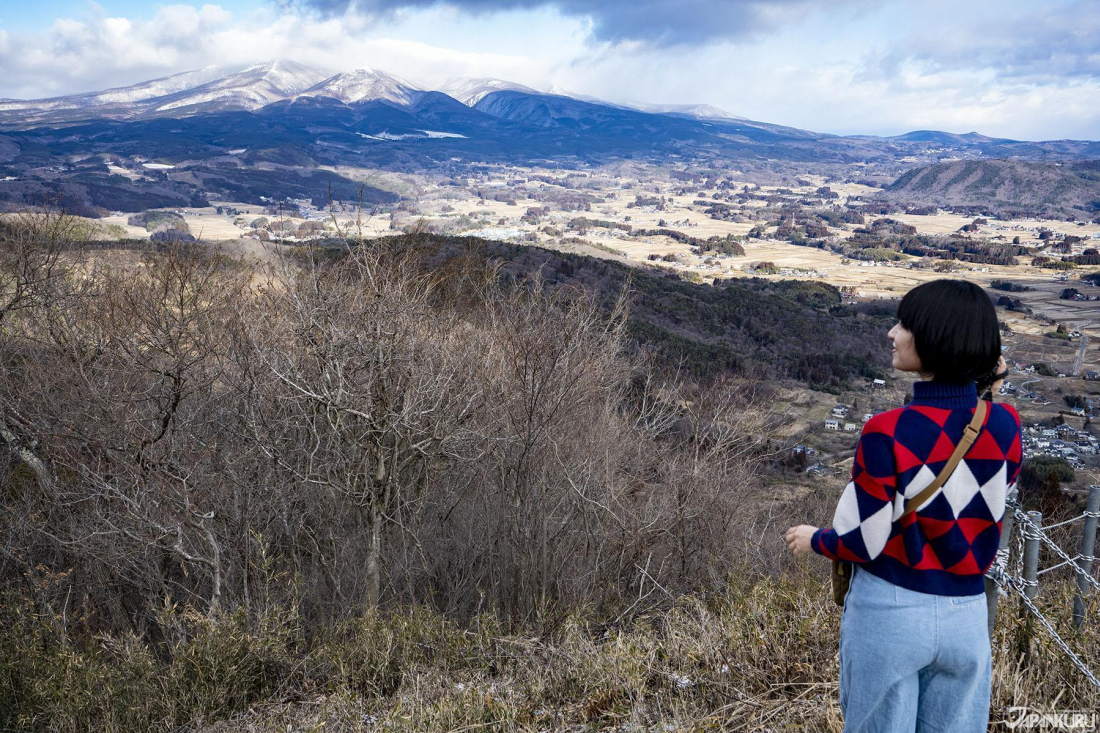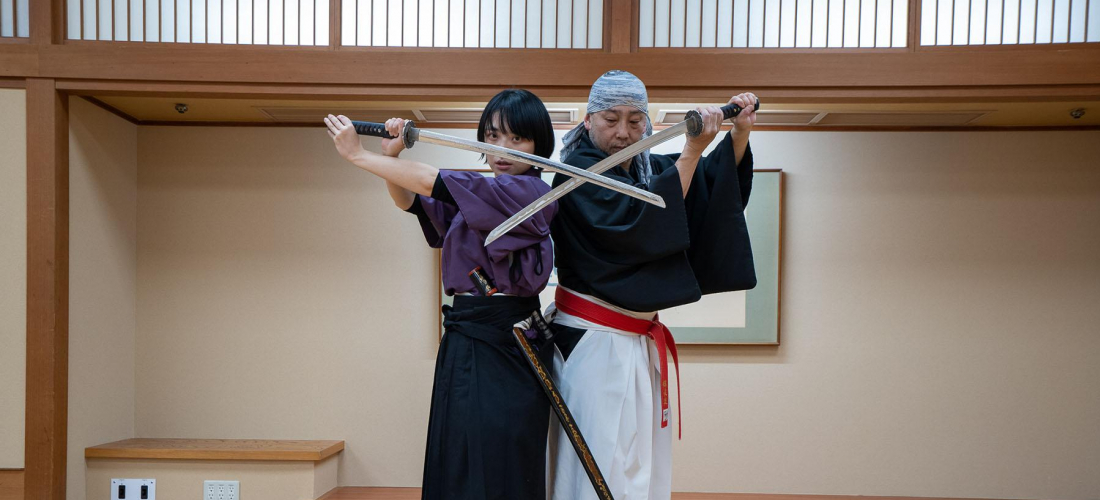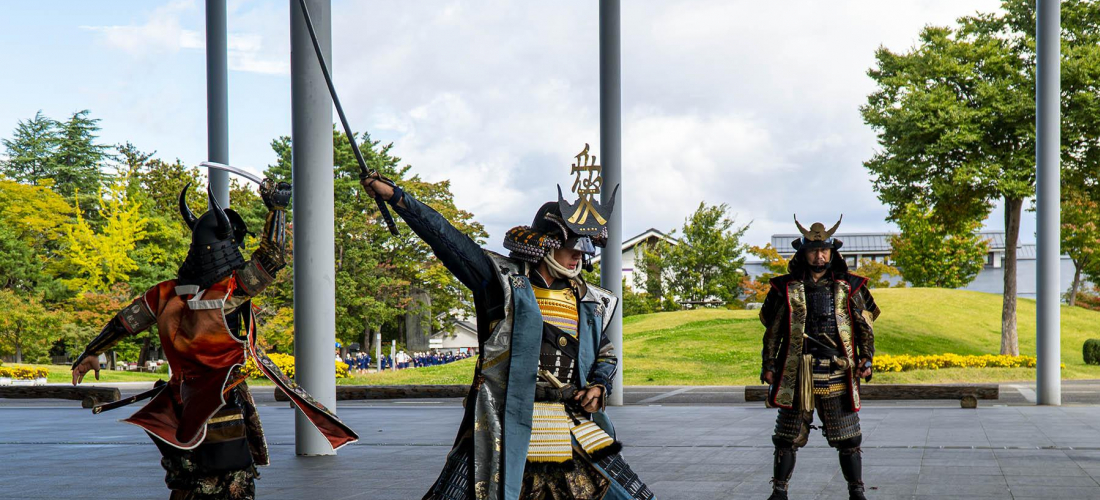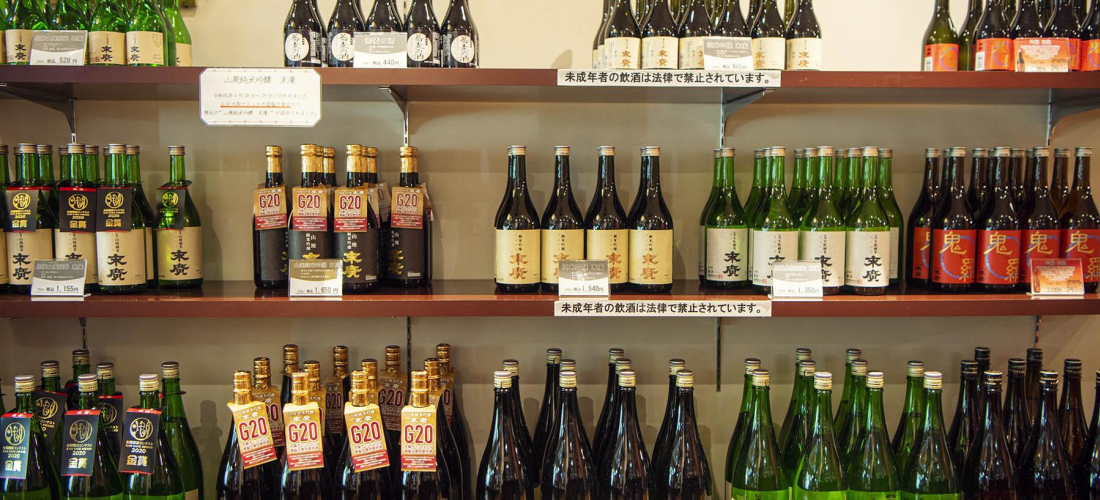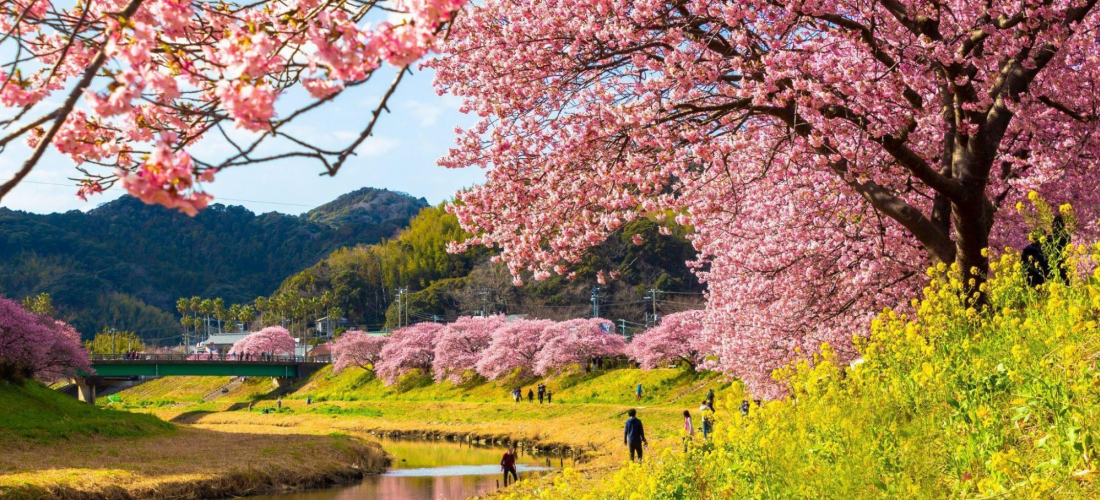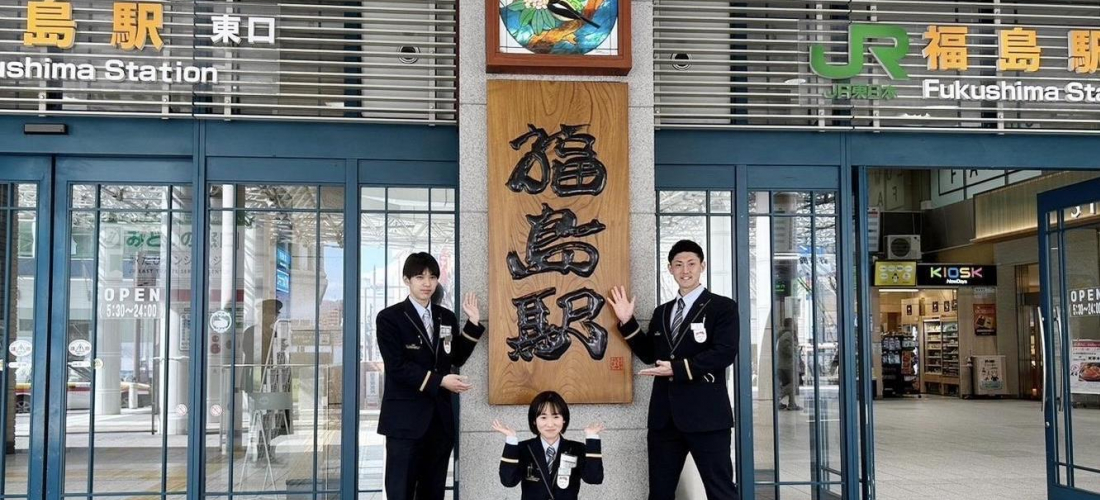
CONTENTS
Fukushima has so much to offer, and not even Japanese people know the half of it! Or so you’ll hear time and time again on any trip to Fukushima. On this 2 1/2 day tour, set off from JR Fukushima Station to find the food, sake, scenery, and friendly faces of rural Japan.
Intro: Starting Your Fukushima Trip from Fukushima Station
The city of Fukushima, located in the northern reaches of Fukushima Prefecture, is the prefectural capital, and a center of metropolitan activity in the area, alongside Koriyama (in central Fukushima). Since Fukushima is positioned on the edge of Japan's northern Tohoku region, the city is also a transportation hub for travelers traveling north from Tokyo's Kanto region along Japan Railway's Tohoku Main Line – one of JR's earliest additions. With the railway celebrating its 150th anniversary in 2022, the storied route of the Tohoku Main Line has witnessed over a century of railroad travel in Japan. On this trip, a dozen years after the 2011 Tohoku earthquake and tsunami, and just months after Japan reopened to the world post-pandemic, the Japankuru team hopped on the JR train to Fukushima Station for an exciting reunion with one of our favorite parts of Japan – and a chance to see even more of this unique area!
At this intersection between Kanto and Tohoku, we found award-winning sake breweries, Japanese whisky distilleries, and sweet local peaches. Not to mention exquisite Kawamata silk and vibrant Date knitwear, plus a traditional wagashi maker frequented by Japan's upper crust, and picturesque beauty in places like the village of Otama, or the secluded springs of Takayu Onsen, little-known even to Japanese travelers.
【Transportation Tips】
For anyone planning a trip to Fukushima (or the general Tohoku region) from overseas, the easiest way to get there is to fly into Tokyo, and pick up a JR East Pass (Tohoku area) issued by the JR East Group. The railway pass costs 20,000 yen for five days, and can be used for unlimited free rides on JR East Japan Group trains and buses within the designated area. That includes all the regular lines, plus shinkansen (bullet trains), limited express trains, and sightseeing trains, saving you time and money!
JR Fukushima Station: Disembark Here to Begin Your Journey!
Located as it is in the capital of Fukushima Prefecture, JR's Fukushima Station is an important hub on the Tohoku Main Line, and railway fans love the station because it offers a view of where the Tohoku and Yamagata shinkansen lines connect. More importantly for this trip, the station is a great starting point for accessing some of Fukushima's most scenic destinations, and it's also the location of Fukushima Prefecture's only JR East Travel Service Center.
Not only are the friendly staff at JR East Travel Service Center ready to share a wealth of Fukushima tourism information, but the facility itself has some lovely examples of Fukushima handicrafts on display, like Kawamata silk and Date knitwear. Before setting off on our Fukushima adventure, we stopped in to visit, and also got the exciting opportunity to chat with several train conductors, drivers, and the Fukushima station master himself, to discuss some of the spots we would find along the Tohoku Main Line in Fukushima.
Recommendations From the JR Fukushima Station Master
Ask Station Master Sasaki, and he'll tell you that his personal recommendations for Fukushima are all about Japanese sake! The prefecture is known to produce some of Japan's best sake, after all, and local breweries have won the highest number of Japan Sake Awards for nine years in a row! Sake lovers should not miss this part of Japan on their next trip to the country.
Easily accessible on foot from Asakanagamori Station (along the Tohoku Main Line), the Sasanokawa Brewery/Asaka Distillery complex produces Japanese sake and whisky side by side, and is known as a pioneer of Japanese whisky production. Its sake brewing history stretches back to the 1700s, but when Japan faced a rice shortage in the years after WWII, the brewery turned to whisky as a stopgap, and they've never looked back. Today, their Yamazakura whisky – the oldest whisky made in the Tohoku region – has fans around Japan and abroad.
Travelers interested in Japanese sake or whisky can make a reservation at Sasanokawa Brewery, take the train to Asakanagamori Station, and enjoy a tour of the brewery-meets-distillery facilities!
Sasanokawa Shuzo Sake Brewery / Asaka Distillery (笹の川酒造・安積蒸留所)
1-178 Sasagawa, Koriyama, Fukushima
Access: 12 min on foot from JR Asakanagamori Station
*Tour availability varies, check their official calendar for details.
Official Website (jp)
Fukushima is home to a number of sake breweries with centuries of history, but other local industries also have developed over the years, including traditional crafts like Kawamata silk weaving and Date knitwear. Since ancient times, silk production and loom weaving have flourished in the Date district where both Kawamata and Date are located. Protected from the elements by the barrier of the Ou Mountains, silkworms thrive in the unique environment, and the area is said to produce the best silk in the east: Kawamata silk.
To this day, there are still many silk workshops in the area, where artisans continue to produce the region's famously beautiful and robust silk products. One workshop near the Kawamata Michi no Eki rest stop, called Saiei Silk, has even developed the world's thinnest yarn-dyed silk fabric, which they've given the rather romantic name "Fairy Feather." The masterfully-produced fabric has won design awards, spreading the name of Kawamata silk throughout the world. To show the fabric off to even more people, the JR East Travel Service Center staff members even wear hats decorated with Kawamata silk straps as part of their uniform! While interested shoppers can find Saiei Silk's elegant products online, or occasionally in boutiques, many still prefer to visit the workshop in Kawamata instead, to see the beautiful fabric in person and get their silk from the source!
Saiei Silk (齋栄織物)
6-1 Baba, Tsuruzawa, Kawamata, Date District, Fukushima
Tel: 024-565-2331
Access: 2 min from Tonishi bus stop, on the Kawamatakokomae bus from JR Fukushima Station (East Exit)
*Please confirm your workshop visit beforehand via e-mail. (In English or Japanese.)
Official Website (en)
While you're in Kawamata to see the silk, don't forget to try their popular local cuisine made with Shamo chicken (シャモ). This specially bred variety of gamefowl is raised in the mountains of northern Date, and is said to have high-quality, flavorful meat. To sample this uncommonly delicious chicken, head to the Kawamata Agriculture Promotion Corporation's very own restaurant "Shamoll," situated at the Kawamata Michi no Eki. The menu includes Kawamata Shamo oyakodon rice bowls (川俣シャモ極親子丼, made with chicken and egg), Shamo youlinji (シャモ油淋鶏, Chinese-style fried chicken with sweet and sour sauce), and many more dishes made with local Shamo chicken.
Shamoll (川俣シャモレストラン シャモール)
13-1 Higashi Tsuruzawa, Kawamata, Date District, Fukushima
Hours: 10:00 – 15:00 (lunch ~14:00, closed Tue)
Access: 2 min from Kinunosatoshirukupia-Mae bus stop, on the bus from JR Fukushima Station (East Exit)
Official Website (jp)
Date's other handicraft specialty is a more recent addition to the area, which only arrived on the heels of a wave of industry. Perhaps it was a natural step to take for a region already famous for silk weaving, but today Date is known for knit fabrics, or "Date knitting." Studios that once housed foundries and other remnants of an older era have slowly but surely been transformed into a series of knitting workshops, which now turn out knit items for Japanese designers, or totally unique designs. Local knit manufacturer Dysun, for example, has perfected their own blend of computerized textile machines and traditional hand knitting, and use not just wool, but also unusual materials like Japanese washi paper, to create their own signature items. Their brand Nijiiro Camp often comes out with playful colorful items, whereas their label Shi-zen-tai frequently works with high-end designers.
In addition to all kinds of knitwear, Date knitting manufacturers also make scarves, accessories, and other smaller items. These days fans of the local knitting can show their support by wearing all the locally-made items, but Dysun and other local workshops hope to someday offer factory tours, and even crafting workshops!
Dysun Co., Ltd. (株式会社 大三)
23 Higashidobashi, Yanagawa-machi, Date District, Fukushima
Access: 20 min on foot from AbukumaExpress Yanagawa Station
Official Website (jp)
Returning to Station Master Sasaki's local recommendations, his final suggestion is perfect after a day of exploring the local breweries and workshops. Mentioned specifically by name, the hot springs of Takayu Onsen are something of a local secret, despite being known by the people of Fukushima for around 400 years. Unlike many hot spring areas around Japan, there is no busy shopping district surrounding Takayu Onsen- instead, the Azuma Mountains rise up all around, creating a tranquil, secluded feeling in the middle of nature. Along with Zao Onsen and Shirabu Onsen in nearby Yamagata Prefecture, Takayu Onsen is known as one of the Three Great Oshu Onsen, especially the Takayu Onsen ryokan called Tamagoyu.
Takayu Onsen's water is milky-white and sulfurous, and Tamagoyu's name (玉子湯, which quite literally means egg water) is said to have two origins: the egg-smooth feeling of your skin after bathing in the water, and also the faint egg smell left by the sulfur-filled water. When Tamagoyu first began welcoming bathers 150 years ago, it was just a simple bathhouse, but the long years have brought some changes while maintaining the traditional feel. Now there are seven different baths scattered across the mountainside, including both indoor and open-air baths, bath huts halfway buried in the snow, and special foot baths. Traversing the paths to find each one feels a little like an adventurous expedition.
As a traditional onsen ryokan, Tamagoyu also offers classic Japanese kaiseki cuisine, with breakfast and dinner made using fresh local ingredients. Plus, the hotel sells a wide variety of snacks and souvenirs, including local Fukushima handicrafts.
Tamagoyu Ryokan (旅館玉子湯)
7 Takayu, Niwasaka, Fukushima
Tel: 024-591-1171
Access: At Tamagoyu bus stop, on the Fukushima Kotsu Takayu Onsen (via Kami-Ubado) bus (40m) from the JR Fukushima Station West Exit
Official Website (jp) | Reservations
Recommendations From Train Conductors and Drivers on the JR Tohoku Main Line
For the conductors and drivers who spend so many hours speeding through the beautiful Fukushima countryside along the Tohoku Main Line, the lunchtime conversation quickly came to rest on two areas in particular. The village of Otama has earned a spot on the official NPO list of Most Beautiful Villages in Japan, thanks in part to the majesty of Mount Adatara rising up as a spectacular backdrop behind the small community. And not far away, the area around Nihonmatsu Castle is known for "chrysanthemum dolls," and for being featured in the Japanese historical drama Yae's Sakura (八重の桜).
The list of "Most Beautiful Villages in Japan" includes Biei, a bucolic town in Hokkaido, and Ine, a unique seaside fishing village in Kyoto, but also Otama, this little Fukushima village. Located between JR Motomiya and Sugita Stations on the Tohoku Main Line, Otama is scattered across the dramatic landscape on the foothills of Mount Adatara, one of the 100 Famous Japanese Mountains favored by the Japanese emperor. The gorgeous scenery changes throughout the seasons, and even if you don't have the time to stop and explore Otama, you absolutely should not miss the view out the window as you pass by on the Tohoku Main Line.
For those who do get a chance to stop in and see more of Otama, one local claim to fame is the Mukaiyama Seisakusho, a former precision machine parts manufacturer that found popularity after expanding into a very different kind of manufacturing: sweets. Their caramel confections are particularly famous – calibrated to sweet perfection utilizing the same exacting standards needed for producing small technical parts. The caramel, with toasty bitter notes and well-balanced flavor, is not just sold as-is, but also used in their cakes, to coat popcorn, and added to chocolates, among other delicious uses.
Mukaiyama Seisakusho's main shop in Otama is surrounded by picturesque rural scenery, and fans of the brand can visit to enjoy the sweets at the on-site coffee shop and bakery, before taking home plenty of snacks as souvenirs from the gift shop. Their caramel pancakes are the go-to option for eat-in customers, and the variety of fillings and toppings means the pancakes are full of tasty surprises. But the Japankuru team also recommends their "flowing pancakes" (流れるパンケーキ), a dish that arrives at the table piled high with a special cream and caramel topping, which flows down when released from a plastic film.
Can't quite fit the trip into your schedule? There's also the convenient "Mukaiyama Seisakusho Cafe S-PAL Koriyama" branch at JR Koriyama Station!
Mukaiyama Seisakusho Otama Base (向山製作所大玉ベース店)
8-1 Shinden, Oyama, Otama, Adachi District, Fukushima
Hours:
Shop: 9:00 – 18:00 (Apr~Sep) / 9:00 – 17:30 (Oct~Mar)
Bakery: 9:00~ (until sold out)
Cafe: 10:00 – 16:00 (weekdays, last order 15:00) / 10:00 – 17:30 (weekends and holidays, last order 17:00)
*All hours subject to change.
Official Website (jp)
A little to the north of Otama, Nihonmatsu is famous for its castle ruins, and "dolls" or mannequins decorated with chrysanthemum flowers. Nihonmatsu Castle, an important local landmark, witnessed all the samurai history that turned the area into a domain of the Niwa Clan, and the fierce fighting of the Boshin War, which brought the end of Japan's samurai shogunate. During the war, the samurai who still supported the old ruling class found themselves unable to resist the efforts of the powerful new government, leading to a tragic loss of young warriors who defended their homes to the death – a story still felt deeply in the region, and found in the story of the popular Japanese drama "Yae's Sakura."
The park around the present-day castle ruins, called Kasumigajo Castle Park, also happens to be one of Japan's top 100 cherry blossom spots! And nearby, the Nihonmatsu Castle Information Center is a new addition, presenting the castle's striking history through the use of digital displays and interactive features. The end result gives travelers a chance to see what makes Nihonmatsu Castle such a local icon, and to make the most of the park with its castle ruins.
Nihonmatsu Castle Information Center (にほんまつ城報館)
3-303-5 Kakunai, Nihommatsu, Fukushima
Hours: 9:00 – 17:00 (closed Mondays, or next day in case of national holidays, and New Year's holidays)
Access: 5 min by car from JR Nihonmatsu Station on the Tohoku Main Line
Official Website (jp)
In this little historical town, there's also a historic little traditional sweets shop! Wagashi lovers might already know of Hinatsu, since passengers traveling on the JR East luxury Train Suite Shiki-shima are known to buy the shop's traditional sweets from station souvenir shops when passing through Fukushima. Crafted by hand using local Fukushima ingredients, Hinatsu's wagashi confections are beautifully decorated packages of nostalgic flavor. Many of their customers flock to the bite-size yokan jelly balls, but the shop's owner recommends you try their Senshintei monaka (洗心亭最中) – crisp wafer shells packed full of rich bean jam. Fans of wagashi, Japan's traditional sweets, will want to try some of Hinatsu's specialties.
Visitors who make their way to Hinatsu's main store in Nihonmatsu are not only afforded an opportunity to see all the colorful, varied sweets being made, but can also try making wagashi themselves, at Hinatsu's handmade wagashi workshop! Reserve a spot to learn the skills, and the fun, of wagashi making directly from the experts.
Hinatsu (日夏菓子店)
1-203 Motomachi, Nihommatsu, Fukushima
Hours: 8:00 – 19:00
Access: 4 min on foot from JR Nihonmatsu Station on the Tohoku Main Line
Official Website (jp)
One last recommendation from the conductors and train drivers – the mouth-watering fried chicken bento lunch they were all chowing down on while we talked. It turns out, this "karaage bento" (唐揚げ弁当) is from a famous Fukushima bento shop called Hinomaru-tei. The bento shop originates from Iwaki, but one of its branches can also be found in Fukushima City, about 20 minutes on foot from JR Minami-Fukushima Station.
Hinomaru-tei Gonome Branch (日の丸亭 郷野目店)
8 Kanegomecho, Gonome, Fukushima City, Fukushima
Hours: 9:00 – 14:00 / 16:00 – 19:00 (closed Mondays)
Access: 22 min on foot from JR Minami-Fukushima Station on the Tohoku Main Line
Official Website (jp)
Before departing from Fukushima Station to explore the area, the station area is a great place to grab a bite to eat. Nearby Terui Gyoza, for example, has become a must-eat for visitors in the area.
Gyoza Terui: Rounds of Delicious Manchurian Dumplings
When it comes to gyoza, Terui is quite possibly the first Fukushima shop to really make a name for itself! When the shop opened in 1953, the first-generation owner had just come back from China (fighting in WWII) with a taste for the local dumplings, a flavor he just couldn't forget. Looking to reproduce the unique Manchurian gyoza, Terui's owner began a process of trial and error, testing endless recipes, until he finally arrived at the gyoza still featured on the menu today. Terui's gyoza are filled with juicy meat and cabbage, wrapped up in a thin skin fried crispy and golden brown, and served with the shop's specialty dipping sauce. They go great with what's on tap.
Nowadays, Gyoza Terui has three locations in Fukushima City, including one right outside JR Fukushima Station. The crispy dumplings are definitely worth a try next time you pass through the station.
Gyoza Terui Fukushima Station East Exit (餃子の照井 東口駅店)
1-1 Sakaemachi, Fukushima City, Fukushima
Hours: 11:30 – 15:00 (last order 14:15) / 17:00 – 20:00 (last order 19:00) (closed Tuesdays)
Official Website (jp)
Shimiten: Mugwort Mochi Inside a Donut, a Fukushima Specialty
Our last Fukushima specialty of the trip, "shimiten" donuts are a specialty from the local sweets maker Konohata. The center of a shimiten is made of chewy green mochi, flavored with the traditional Japanese ingredient mugwort, and the outside is a layer of light fluffy donut batter, fried to a flaky golden brown. The end result is a unique combination of Japanese and Western-style flavors that's sweet, but not overpowering, and decadent without being greasy. Shimiten are also available with optional red bean filling, or in a miniature size, offered in cups like a box of donut holes. (Great for sharing!) Konohata has a store in Pivot, a shopping area directly connected to JR Fukushima Station, so they're a convenient snack to pick up for your trip!
Konohata Shimiten (木乃幡食品館ピボット店)
Power City Pivot 1F, 1-1 Sakaemachi, Fukushima City, Fukushima
Hours: 10:00 – 20:00 (closed Jan. 1, second Wed in Sep)
Official Website (jp)
+ All the Souvenirs You Could Want at JR Fukushima Station
On this trip through Fukushima, we chose JR Fukushima Station as a convenient starting point for our itinerary – but it's a great place to end your trip, too! S-PAL, one of the shopping areas connected to the station, is particularly good for a wide variety of souvenir options, with shops like Jizake no Mori (specializing in local sake) and a branch of Hinatsu, the wagashi specialists.
Jizake no Mori has snacks and local gourmet products, but more importantly, the shop offers a great selection of sake from the surrounding Aizu area. Check out the bottles from the famous local brewery Suehiro, or pick up the sake and whisky made at Sasanokawa Brewery/Asaka Distillery right at the station! With so many bottles lined up on the shelf, it can be hard to choose which sake to try, but the friendly staff are always ready to help and offer advice.
And if you didn't get enough Japanese sweets in Nihonmatsu, here's another chance to stock up!
S-PAL Fukushima (エスパル福島)
1-1 Sakaemachi, Fukushima City, Fukushima
Hours: 10:00 – 20:00
Official Website (jp)
The Japanese Scenery Still Waiting to Be Discovered
On this trip to Fukushima, we took the advice of the station master, conductors, and train drivers at JR Fukushima Station, and got to see a whole new side of Fukushima. There's the quaint town of Nihonmatsu, with its tragic war-torn past and sleepy small-town present. The onsen ryokan Tamagoyu, tucked away in the snowy mountains like a secret hot spring escape. And the districts of Kawamata and Date, where textile workers have long labored over looms to create fine fabrics. All of these places left their own distinct impressions, each one quite different and unforgettable.
According to Station Master Sasaki, "Fukushima has a lot to offer, but the people of Fukushima are a little too modest when it comes to getting all that information out there." If you're ready for a unique adventure on your next trip to Japan, give Fukushima a try!
Details
NAME:Fukushima (福島)
COMMENT
FEATURED MEDIA
VIEW MORE 
A New Tokyo Animal Destination: Relax & Learn About the World’s Animals in Japan
#pr #japankuru #anitouch #anitouchtokyodome #capybara #capybaracafe #animalcafe #tokyotrip #japantrip #카피바라 #애니터치 #아이와가볼만한곳 #도쿄여행 #가족여행 #東京旅遊 #東京親子景點 #日本動物互動體驗 #水豚泡澡 #東京巨蛋城 #เที่ยวญี่ปุ่น2025 #ที่เที่ยวครอบครัว #สวนสัตว์ในร่ม #TokyoDomeCity #anitouchtokyodome

Shohei Ohtani Collab Developed Products & Other Japanese Drugstore Recommendations From Kowa
#pr #japankuru
#kowa #syncronkowa #japanshopping #preworkout #postworkout #tokyoshopping #japantrip #일본쇼핑 #일본이온음료 #오타니 #오타니쇼헤이 #코와 #興和 #日本必買 #日本旅遊 #運動補充能量 #運動飲品 #ช้อปปิ้งญี่ปุ่น #เครื่องดื่มออกกำลังกาย #นักกีฬา #ผลิตภัณฑ์ญี่ปุ่น #อาหารเสริมญี่ปุ่น

도쿄 근교 당일치기 여행 추천! 작은 에도라 불리는 ‘가와고에’
세이부 ‘가와고에 패스(디지털)’ 하나면 편리하게 이동 + 가성비까지 완벽하게! 필름카메라 감성 가득한 레트로 거리 길거리 먹방부터 귀여움 끝판왕 핫플&포토 스폿까지 총집합!
Looking for day trips from Tokyo? Try Kawagoe, AKA Little Edo!
Use the SEIBU KAWAGOE PASS (Digital) for easy, affordable transportation!
Check out the historic streets of Kawagoe for some great street food and plenty of picturesque retro photo ops.
#pr #japankuru #도쿄근교여행 #가와고에 #가와고에패스 #세이부패스 #기모노체험 #가와고에여행 #도쿄여행코스 #도쿄근교당일치기 #세이부가와고에패스
#tokyotrip #kawagoe #tokyodaytrip #seibukawagoepass #kimono #japantrip

Hirakata Park, Osaka: Enjoy the Classic Japanese Theme Park Experience!
#pr #japankuru #hirakatapark #amusementpark #japantrip #osakatrip #familytrip #rollercoaster #retrôvibes #枚方公園 #大阪旅遊 #關西私房景點 #日本親子旅行 #日本遊樂園 #木造雲霄飛車 #히라카타파크 #สวนสนุกฮิราคาตะพาร์ค

🍵Love Matcha? Upgrade Your Matcha Experience With Tsujiri!
・160년 전통 일본 말차 브랜드 츠지리에서 말차 덕후들이 픽한 인기템만 골라봤어요
・抹茶控的天堂!甜點、餅乾、飲品一次滿足,連伴手禮都幫你列好清單了
・ส่องมัทฉะสุดฮิต พร้อมพาเที่ยวร้านดังในอุจิ เกียวโต
#pr #japankuru #matcha #matchalover #uji #kyoto #japantrip #ujimatcha #matchalatte #matchasweets #tsujiri #말차 #말차덕후 #츠지리 #교토여행 #말차라떼 #辻利抹茶 #抹茶控 #日本抹茶 #宇治 #宇治抹茶 #日本伴手禮 #抹茶拿鐵 #抹茶甜點 #มัทฉะ #ของฝากญี่ปุ่น #ชาเขียวญี่ปุ่น #ซึจิริ #เกียวโต

・What Is Nenaito? And How Does This Sleep Care Supplement Work?
・你的睡眠保健品——認識「睡眠茶氨酸錠」
・수면 케어 서플리먼트 ‘네나이토’란?
・ผลิตภัณฑ์เสริมอาหารดูแลการนอน “Nenaito(ネナイト)” คืออะไร?
#pr #japankuru #sleepcare #japanshopping #nenaito #sleepsupplement #asahi #睡眠茶氨酸錠 #睡眠保健 #朝日 #l茶胺酸 #日本藥妝 #日本必買 #일본쇼핑 #수면 #건강하자 #네나이토 #일본영양제 #อาหารเสริมญี่ปุ่น #ช้อปปิ้งญี่ปุ่น #ร้านขายยาญี่ปุ่น #ดูแลตัวเองก่อนนอน #อาซาฮิ

Japanese Drugstore Must-Buys! Essential Items from Hisamitsu® Pharmaceutical
#PR #japankuru #hisamitsu #salonpas #feitas #hisamitsupharmaceutical #japanshopping #tokyoshopping #traveltips #japanhaul #japantrip #japantravel

Whether you grew up with Dragon Ball or you just fell in love with Dragon Ball DAIMA, you'll like the newest JINS collab. Shop this limited-edition Dragon Ball accessory collection to find some of the best Dragon Ball merchandise in Japan!
>> Find out more at Japankuru.com! (link in bio)
#japankuru #dragonball #dragonballdaima #animecollab #japanshopping #jins #japaneseglasses #japantravel #animemerch #pr

This month, Japankuru teamed up with @official_korekoko to invite three influencers (originally from Thailand, China, and Taiwan) on a trip to Yokohama. Check out the article (in Chinese) on Japankuru.com for all of their travel tips and photography hints - and look forward to more cool collaborations coming soon!
【橫濱夜散策 x 教你怎麼拍出網美照 📸✨】
每次來日本玩,是不是都會先找旅日網紅的推薦清單?
這次,我們邀請擁有日本豐富旅遊經驗的🇹🇭泰國、🇨🇳中國、🇹🇼台灣網紅,帶你走進夜晚的橫濱!從玩樂路線到拍照技巧,教你怎麼拍出最美的夜景照。那些熟悉的景點,換個視角說不定會有新發現~快跟他們一起出發吧!
#japankuru #橫濱紅磚倉庫 #汽車道 #中華街 #yokohama #japankuru #橫濱紅磚倉庫 #汽車道 #中華街 #yokohama #yokohamaredbrickwarehouse #yokohamachinatown

If you’re a fan of Vivienne Westwood's Japanese designs, and you’re looking forward to shopping in Harajuku this summer, we’ve got important news for you. Vivienne Westwood RED LABEL Laforet Harajuku is now closed for renovations - but the grand reopening is scheduled for July!
>> Find out more at Japankuru.com! (link in bio)
#japankuru #viviennewestwood #harajuku #omotesando #viviennewestwoodredlabel #viviennewestwoodjapan #비비안웨스트우드 #오모테산도 #하라주쿠 #日本購物 #薇薇安魏斯伍德 #日本時尚 #原宿 #表參道 #japantrip #japanshopping #pr

Ready to see TeamLab in Kyoto!? At TeamLab Biovortex Kyoto, the collective is taking their acclaimed immersive art and bringing it to Japan's ancient capital. We can't wait to see it for ourselves this autumn!
>> Find out more at Japankuru.com! (link in bio)
#japankuru #teamlab #teamlabbiovortex #kyoto #kyototrip #japantravel #artnews
Photos courtesy of teamLab, Exhibition view of teamLab Biovortex Kyoto, 2025, Kyoto ® teamLab, courtesy Pace Gallery

Japanese Makeup Shopping • A Trip to Kamakura & Enoshima With Canmake’s Cool-Toned Summer Makeup
#pr #canmake #enoshima #enoden #에노시마 #캔메이크 #japanesemakeup #japanesecosmetics

⚔️The Robot Restaurant is gone, but the Samurai Restaurant is here to take its place. Check it out, and don't forget your coupon!
🍣신주쿠의 명소 로봇 레스토랑이 사무라이 레스토랑으로 부활! 절찬 쿠폰 발급중
💃18歲以上才能入場的歌舞秀,和你想的不一樣!拿好優惠券去看看~
#tokyo #shinjuku #samurairestaurant #robotrestaurant #tokyotrip #도쿄여행 #신주쿠 #사무라이레스토랑 #이색체험 #할인이벤트 #歌舞伎町 #東京景點 #武士餐廳 #日本表演 #日本文化體驗 #japankuru #japantrip #japantravel #japanlovers #japan_of_insta

Japanese appliance & electronics shopping with our KOJIMA x BicCamera coupon!
用JAPANKURU的KOJIMA x BicCamera優惠券買這些正好❤️
코지마 x 빅 카메라 쿠폰으로 일본 가전 제품 쇼핑하기
#pr #japankuru #japanshopping #kojima #biccamera #japaneseskincare #yaman #dji #osmopocket3 #skincaredevice #日本購物 #美容儀 #相機 #雅萌 #日本家電 #일본여행 #면세 #여행꿀팁 #일본쇼핑리스트 #쿠폰 #일본쇼핑 #일본브랜드 #할인 #코지마 #빅카메라 #japankurucoupon


